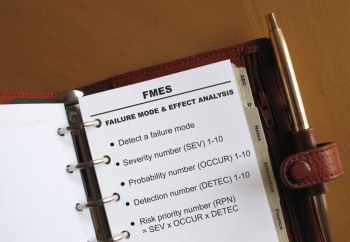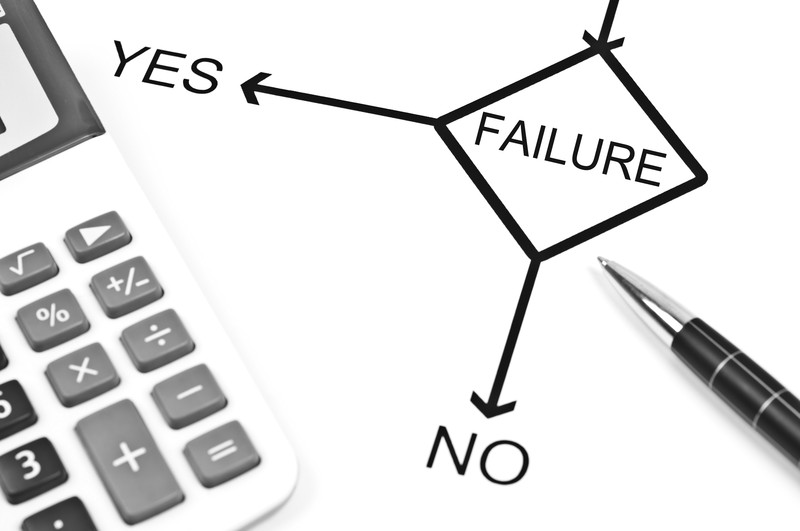When special ops forces prepare for a mission they begin by gathering as much information about their target as they can find. They look at maps and building blueprints and analyze entrance, exits and potential hiding spots. During the product approval process They go through the entire mission and practice each person’s role in the operation looking at weak points in their plan and preparing for possible contingencies. This level of preparation helps to make sure the mission is successful and no lives are lost and allows the mission to be completed with surgeon-like precision. Designing and building automobiles requires the same amount of planning and analysis as a special ops mission because just like a special ops mission, there are lives at stake when a customer drives our vehicles. As automotive engineers we use a very powerful tool called the Failure Mode Effects Analysis (FMEA) that ensures that our vehicles are designed and produced to the highest quality standards possible. The FMEA process was first used by the US military and later it moved to both aerospace and automotive applications.
What is the FMEA?
 The FMEA tool, a part of the overall APQP process, is used through the design and production process to identify where failures can occur, how frequently they could happen and whether or not we can detect them. The FMEA is a step by step process that looks at the vehicle design, the production processes and tests, and finally how the vehicle will be used by the end customer and looks for all areas where failures could occur. The FMEA uses a spreadsheet format and uses inputs from all the team members to complete the form. FMEA can be done on a design (DFMEA), production process (PFMEA) and even quality FMEAs can be done. There is no end of uses for this powerful tool.
The FMEA tool, a part of the overall APQP process, is used through the design and production process to identify where failures can occur, how frequently they could happen and whether or not we can detect them. The FMEA is a step by step process that looks at the vehicle design, the production processes and tests, and finally how the vehicle will be used by the end customer and looks for all areas where failures could occur. The FMEA uses a spreadsheet format and uses inputs from all the team members to complete the form. FMEA can be done on a design (DFMEA), production process (PFMEA) and even quality FMEAs can be done. There is no end of uses for this powerful tool.
Using the FMEA
To complete an FMEA the first step is form the review team. The team should be comprised of everyone in all functions involved in the assembly process or design and additionally you will want to pull in your experts or your senior most experienced engineers that can lend their expertise and knowledge to the FMEA process. Next, the team reviews the process or design and breaks it down into process steps or design areas which are filled in on the FMEA form. Next, for each process step potential failure modes are listed and the effects of each failure. Rankings are then assigned on a 1-10 scale with one being the least severe or lowest chance of occurring or detecting and ten being the most severe. Risk priority numbers (RPN) are then calculated by multiplying the three scores and then the team develops action plans for the highest scores. The action plans are implemented and then that step is re-ranked to determine a new RPN score that gauges the effectiveness of the action plan.
FMEA example
Below is a sample of a completed FMEA for an application process. On the left hand side of the chart you see the process function that is being analyzed. Potential failure modes are listed in each column with the potential failure mode effects. The scores are then filled in and the RPN calculated. In this example action plans are developed for each failure mode. There can be more than one action plan in some cases so each one is documented separately but when the new rankings are done they are only completed for one failure mode so that you can gauge effectiveness.

The FMEA tool is used in all areas of the automotive design, production and quality process and acts as a quality template. As a product is developed and tested new failure modes may be identified and the FMEA will be updated to reflect the new information. Engineers constantly work to improve their designs and eliminate potential failure modes based on the RPN scores from the template. When a product is ready to launch the FMEA tool will be reviewed one last time to ensure that all areas have been reviewed and all action plans have been put in place before finally closing the FMEA document as part of the product release documentation package.
As an automotive engineer, you will have to deal with these at some point in your career. Usually your company will train you on how to handle your specific FEMA. Although they can be a lot of work, FEMAs play an important role in making sure you mitigate risk in production.
So… what are your experiences with FEMAs (good or bad)?

